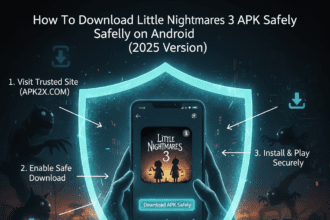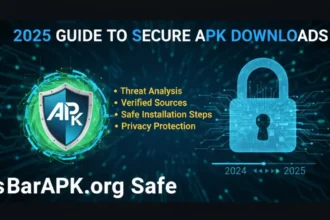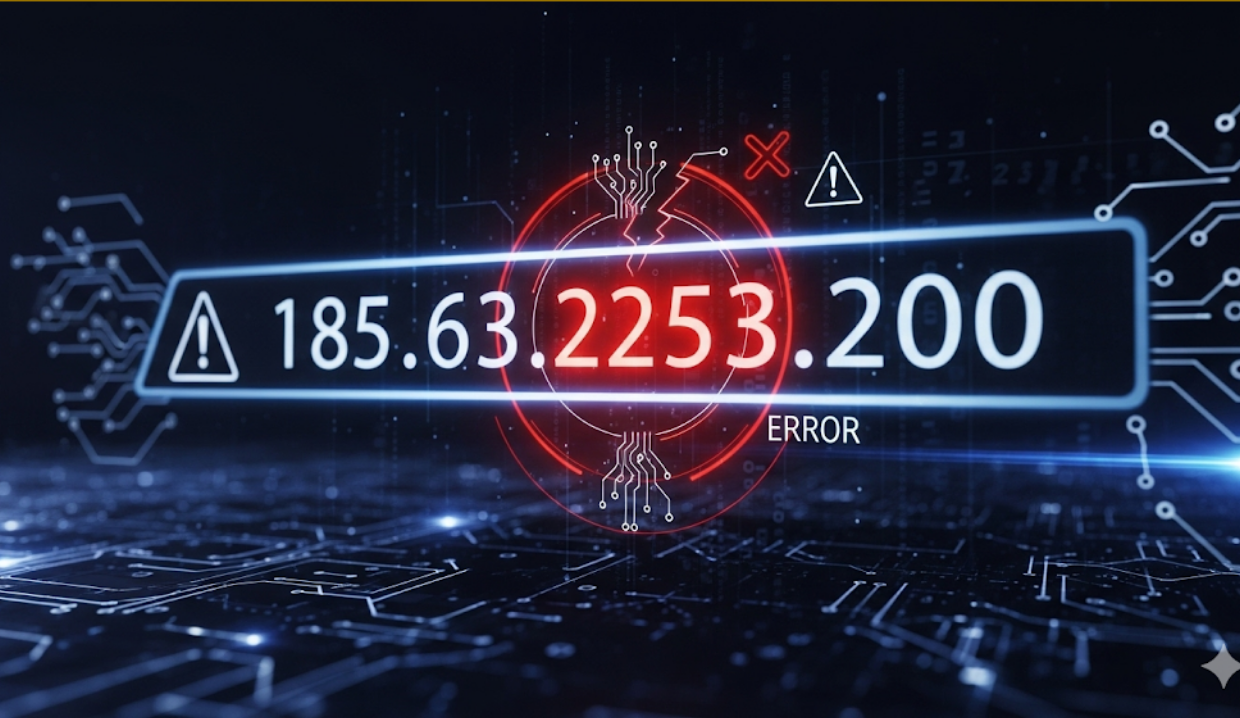Many people get confused when they come across strange numbers online, such as 185.63.2253.200. At first glance, it looks like a normal IP address, but it’s actually not valid. An IP is supposed to be a unique identifier that lets devices communicate on the internet, and every number must follow specific rules.
This guide will explain why this address doesn’t work, what makes a valid IP, and the simple steps you can take to check and fix invalid entries.
Understanding IP Addresses Simply
| Feature | IPv4 | IPv6 |
|---|---|---|
| Format | 32-bit, 4 octets | 128-bit, 8 groups |
| Example | 192.168.1.1 | 2001:0db8:85a3::8a2e:0370:7334 |
| Address Space | ~4.3 billion | Vast (almost unlimited) |
| Usage | Still common | Growing adoption |
An IP address is like a digital home address for your device on the internet. It helps computers, phones, and servers identify each other and send information correctly.
There are two main types: IPv4 and IPv6. IPv4 is the older, more common format, while IPv6 is newer and designed for the growing number of devices. Each IPv4 address is made of four parts, called octets, and every number must fall between 0 and 255 to be valid.
The Problem With 185.63.2253.200
| Rule | Valid Example | Invalid Example |
|---|---|---|
| 4 octets separated by dots | 185.63.200.45 | 185.63.2253.200 |
| Each octet = 0–255 | 192.168.0.1 | 192.168.300.1 |
| No leading zeros | 10.0.0.5 | 010.00.0.5 |
| Numeric only (no letters) | 8.8.8.8 | 8.8.A.8 |
The issue with 185.63.2253.200 is clear—the third number, 2253, is impossible. In a valid IPv4 address, each part (called an octet) must range from 0 to 255. Anything above this limit makes the IP invalid. Such errors usually happen because of typos, corrupted data, or misconfigured systems.
Knowing the rules of valid IP formatting helps you quickly spot problems, avoid confusion, and fix entries before they create issues in your network or logs.
What It Means if You See This in Logs
If you notice 185.63.2253.200 in system logs, don’t panic. Most of the time, it’s just a mistyped entry or corrupted data that slipped in. However, in some cases, it could be a spoofed IP used by bots or hackers to confuse your records.
The key is knowing when to ignore it and when to investigate further. Using IP validation tools and monitoring unusual patterns can help keep your systems secure and error-free.
How to Check if an IP Address is Valid
| Method | Description | Tools / Commands |
|---|---|---|
| Manual Rule Check | Apply the 0–255 rule for each octet | Visual inspection |
| Online Validators | Check instantly with free IP tools | IPVoid, MXToolbox |
| Command-Line Tools | Test IPs through system utilities | ping, traceroute |
| Regex Validation | Match against IP address patterns | Regex snippet |
Checking if an IP like 185.63.2253.200 is valid is simple. First, remember the 0–255 rule—each number in an IPv4 must stay within that range. You can also use free online IP validators or lookup tools to confirm instantly.
For advanced users, commands like ping, traceroute, or whois can help verify addresses. Even quick regex patterns can filter invalid IPs. These checks save time, prevent errors, and ensure only proper IPs are used in your system.
How Developers Validate IPs
For developers, manually spotting errors like 185.63.2253.200 isn’t enough. They often rely on automated methods. In Python, the ipaddress module can instantly check if an IP is valid. In JavaScript, a simple regex snippet helps filter invalid inputs.
Automated validation is safer than manual checks because it reduces mistakes, saves time, and ensures accuracy in large systems. Adding these methods to apps, forms, or scripts helps prevent invalid IPs from ever entering your network or database.
Also read: How Can a Word Unscrambler Help You Win Word Games
How to Correct or Prevent Invalid IPs
Fixing invalid entries like 185.63.2253.200 starts with simple checks. If the error comes from a typo in a config file or database, correct it manually. Developers can prevent these mistakes by adding validation rules in web forms and scripts.
It’s also smart to sanitize log inputs so corrupted or spoofed data doesn’t slip through. These steps not only reduce errors but also strengthen security, keeping your systems clean, reliable, and protected from unnecessary issues.
IP Addresses in Context
| Type | Example Range | Usage |
|---|---|---|
| Private | 192.168.0.0 – 192.168.255.255 | Home/office networks |
| Private | 10.0.0.0 – 10.255.255.255 | Large private networks |
| Private | 172.16.0.0 – 172.31.255.255 | Corporate networks |
| Public | Any IP outside private ranges | Internet connectivity |
To understand why 185.63.2253.200 is invalid, it helps to see how real IPs are used. Some addresses are reserved, like 192.168.x.x for private networks or 127.0.0.1 for localhost. Others are public IPs, assigned to devices that connect to the internet.
With the rapid growth of devices, the world is moving from IPv4 to IPv6, which offers a much larger pool of addresses. Knowing this context makes it easier to spot invalid or suspicious IP entries.
FAQS 185.63.2253.200
Is 185.63.2253.200 a valid IP address?
No, it is not valid because one of the octets exceeds the IPv4 limit of 255.
Why does 185.63.2253.200 appear in my logs?
It usually happens due to typos, corrupted data, or spoofed entries.
Can invalid IPs like 185.63.2253.200 harm my system?
Not directly, but they can cause confusion, errors, or hide malicious activity.
How can I check if an IP is valid?
Use the 0–255 rule, online IP validators, or tools like ping and whois.
What’s the difference between public and private IPs?
Public IPs connect devices to the internet, while private IPs work inside local networks.
Conclusion
The IP 185.63.2253.200 is not valid because it breaks the basic IPv4 rule that each part must be between 0 and 255. W
hile it may appear in logs or configs due to typos, corruption, or spoofing, it’s nothing to worry about once identified. The key takeaway is clear: always validate IP addresses to avoid errors and security risks. Use tools, automation, and good practices to keep your systems accurate, reliable, and safe., and safe.



